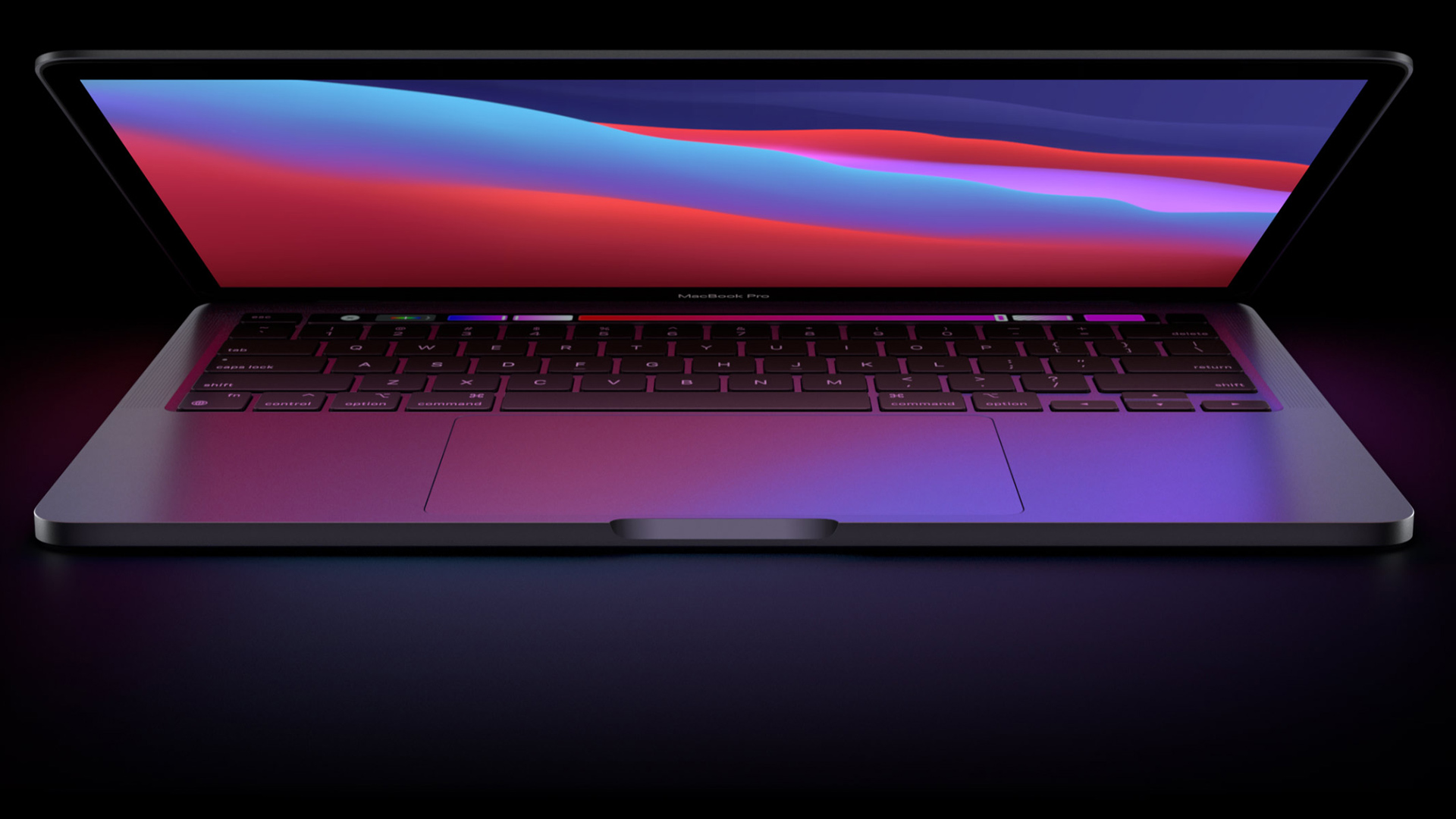
They're finally here. Yesterday Apple announced the new ARM powered Macs, and while there's no 16" MacBook Pro, the models shown offer a glimpse of the power to come.

ARM M1 powered 13" MacBook Pro. Image: Apple.
While previous Apple events have seemed more concise, more entertaining by not being live, this 45-minute whirlwind show suffered from the lack of on-stage live demo’s. Watching Craig Federighi mousing around the latest macOS on a live stream is normally a bit of a snooze, but when you’ve got a whole new chip architecture and staggering performance leaps, seeing it for yourself would’ve been nice.
As it was, this lightning fast presentation charged through the introduction of the first Apple Silicon Macs - MacBook Air, 13-inch MacBook Pro and Mac mini - all available to order now and shipping next week. A remarkable feat of engineering and supply chain wizardry.
The headline figures are stunning: up to 3.5x faster CPU performance, up to 6x faster GPU performance and 15x faster machine learning. Up to 20 hours battery life - double that of previous MacBook Pro when watching video.
Just as on iPhone, at the heart of new Macs will be a high integrated System-On-Chip (SOC) with unified memory architecture for highest speed performance (and no possibility of memory upgrades). Bootcamp support is gone, but all previous Mac apps should run via Rosetta2 at near native or even faster performance levels, while iPhone and iPad apps can be directly downloaded and run (as long as the publisher allows).
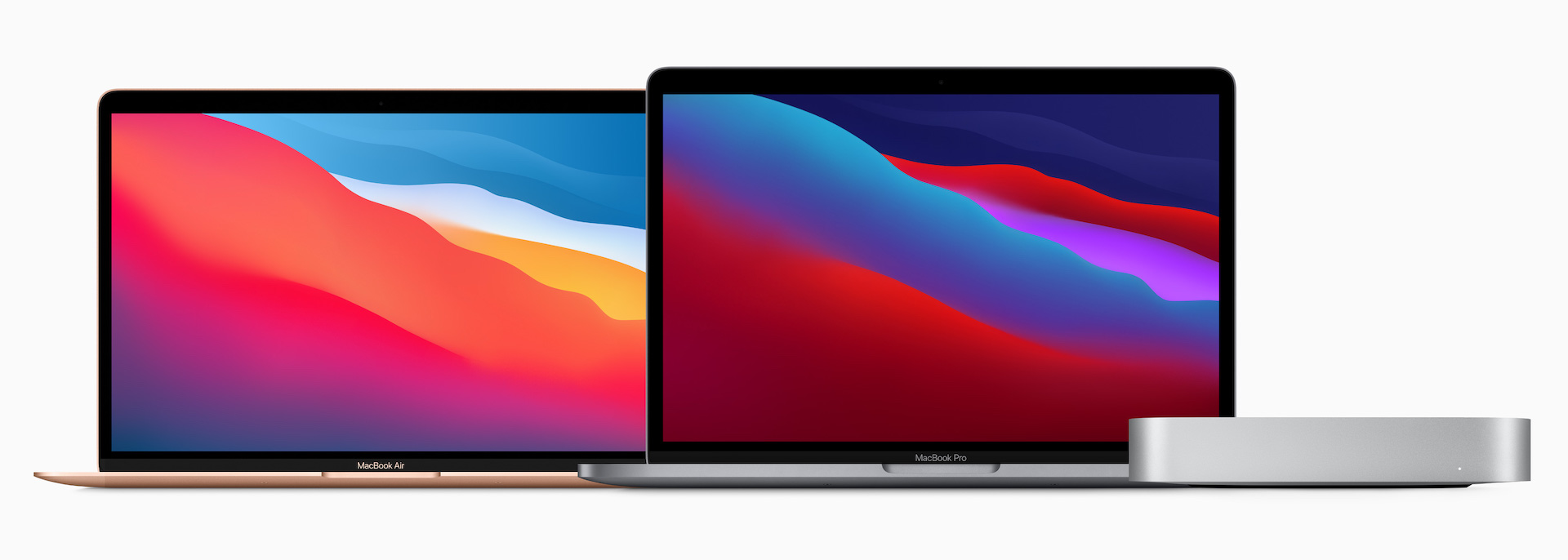
The new 2020 ARM M1 Mac range. Image: Apple.
Apple M1 chip
While the Apple Development Kit used a 2018 iPad chip (A12Z), the first true Apple Silicon Macs use a new purpose-built chip called M1. Quite how different this chip is from the A14 shipping in the iPhone 12 wasn’t made clear, but it is based on the same 5-nm process and has 16-billion transistors with 4 high performance and 4 high efficiency cores. (A14 has six cores and 11.8 billion transistors.) Apple claim the high performance core is the fastest CPU core in the world and overall delivers the world’s best CPU performance per watt. It has twice the performance of a PC CPU at 1/4 the power draw.
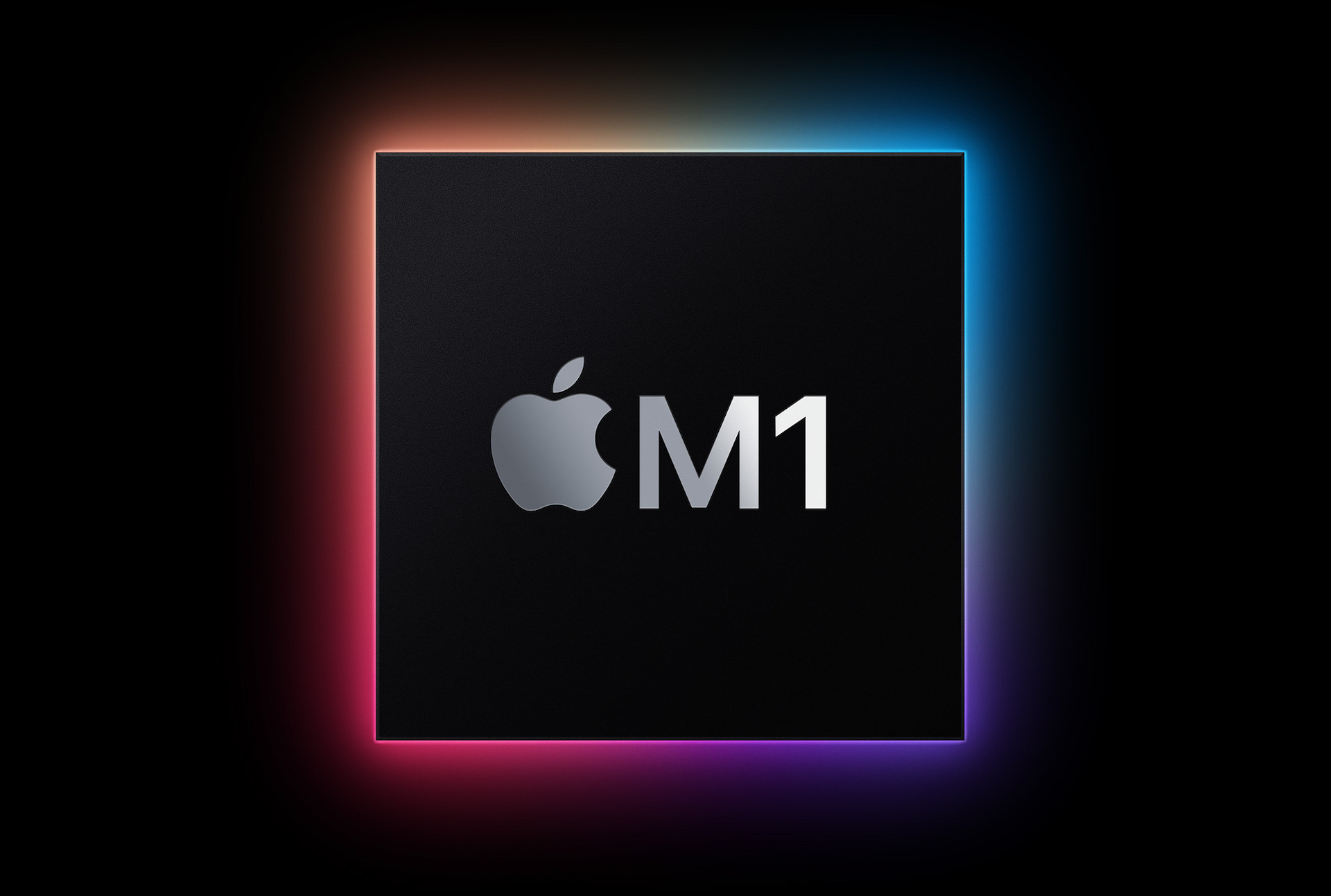
Apple’s preference for slimline laptops has traditionally meant reliance on integrated graphics and weak performance. Now that Apple is designing its own integrated GPU, they claim a huge 2x leap in graphics performance at 1/3 the power draw. The M1’s 8-core GPU is capable of 2.6 TFLOPS with nearly 25K concurrent threads - Apple claim it’s the world’s fastest integrated GPU. (As an aside, all the Apple Silicon Macs lack support for eGPUs which may be a quirk of M1 or a future strategy.)
The M1’s machine learning neural engine has 16-cores and delivers a 15x leap in performance with up to 11 trillion ops per second. For apps optimised to use it, such as Pixelmator Pro’s resolution enhancement ML, then this is a staggering leap. Quite what Adobe Photoshop or Premiere Pro can do with it is going to be very interesting.
As mentioned above, we sadly didn’t see a procession of developers march on stage to demo their apps, but a blitzkrieg fast-cut video threw out some promising stats. Final Cut Pro can render at 6x speed, Logic Pro can have 3x as many instruments. Some Lightroom operations already offer 8x performance uplift. Baldur’s Gate 3 was shown running at high resolution and smooth frame rates with amazing visuals.
All of Apple’s own apps are optimised for Apple Silicon and a key point made during the presentation was how much real-world data Apple has on applications running on Mac. When building M1 (and Big Sur) they had a very clear picture of what they needed to do to make a real-world difference.
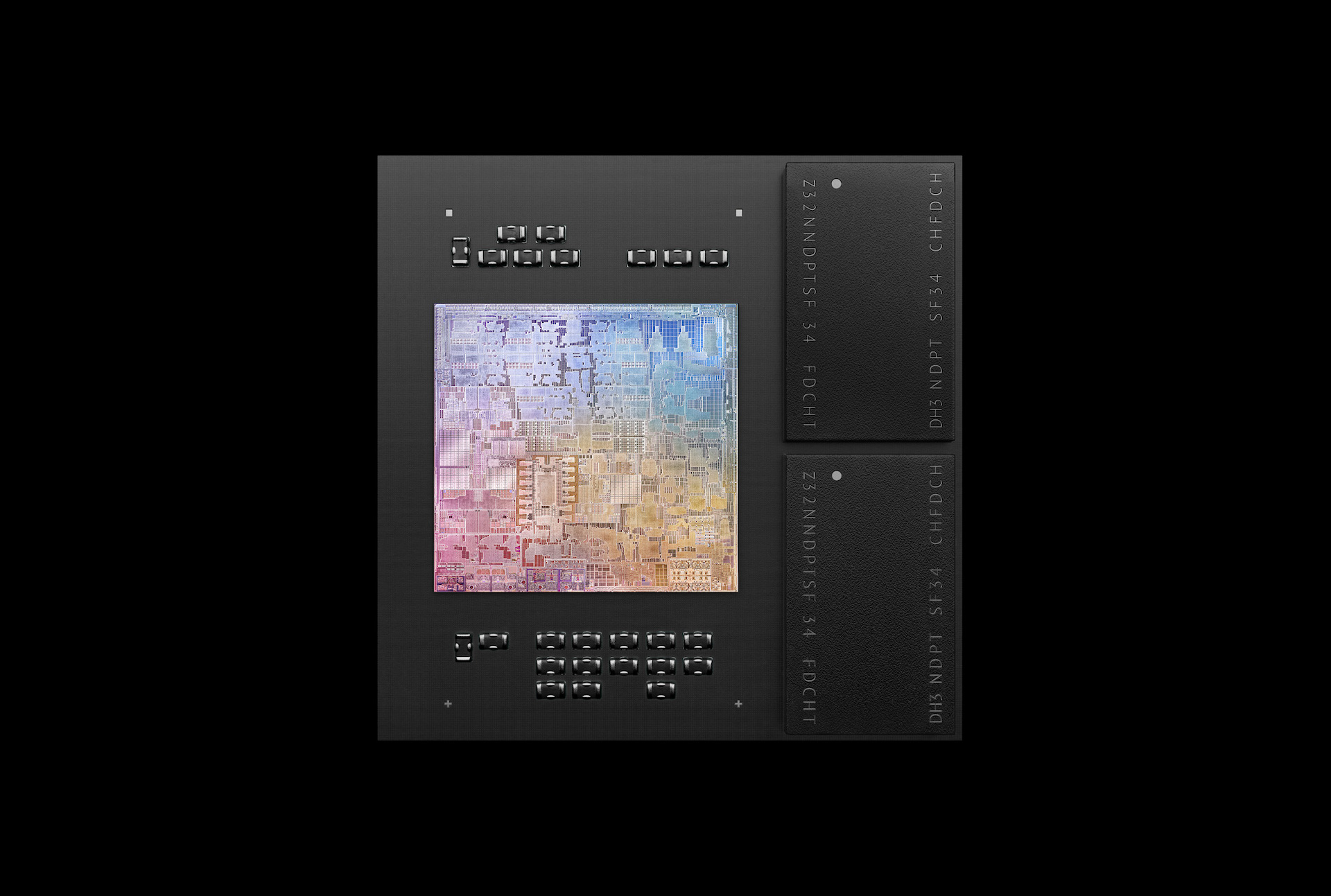
Apple's new M1 ARM chip. Image; Apple.
Just like an iPhone, Apple Silicon Macs now start up immediately from rest, Safari is nearly twice as fast, and the unified memory architecture means there’s no need to copy data from CPU to GPU which has great potential for video production apps.
As expected, just like the PowerPC to Intel transition, Apple have largely locked down the chassis design so as to focus on the internals. And yes, this means the laptops keep their 720P webcams, even if they will now benefit from state-of-the-art image processing via M1. Despite iOS compatibility, there are no touchscreens, but we know from iOS 14 and the iPad’s Magic Keyboard trackpad that isn’t necessarily a barrier to a good experience. Also worth noting, both laptops keep to the Magic Keyboards that recently replaced the trouble-prone ultra-slim butterfly keyboard.
Pricing is largely unchanged, apart from a cheaper entry-level Mac mini, which is disappointing but unsurprising.
2020 M1 MacBook Air
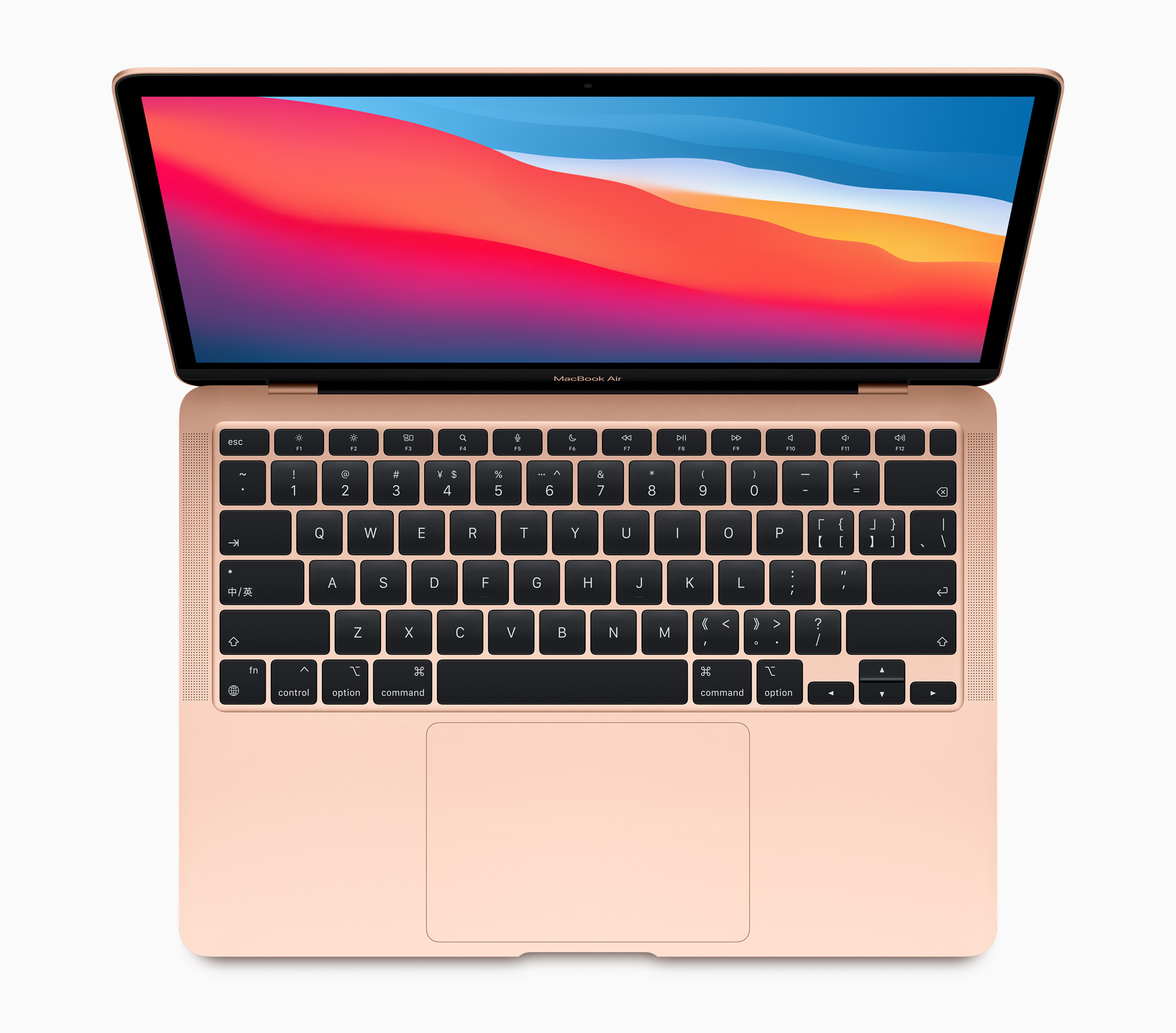
2020 ARM M1 MacBook Air. Image: Apple.
The MacBook Air has long been Apple’s bestselling laptop and is the obvious choice for spearheading the Apple Silicon transition. The wedge-shaped chassis is basically unchanged, give or take a few millimetres and ounces, but Apple Silicon means a 3.5 faster CPU compared to previous (Intel) gen, up to 5x faster graphics and 9x faster machine learning. SSD speed is doubled thanks to the integrated memory controller and faster flash technology.
All this performance comes without the aid of active cooling - the new Air is a fan-less and thus a silent design - and yet Apple claim it’s faster than 98% of Windows laptops. 3x faster than the bestselling Windows laptop in its class.
Battery life is significantly boosted with 18 hours battery life, an increase of six over the previous model. Video conferencing time is doubled - a very mixed benefit but clearly due to iPhone image processing tech. The keyboard is also tweaked with Spotlight (search), Dictation and Do Not Disturb replacing Launchpad and Keyboard brightness.
The 13.3-inch 2560x1600 Retina screen supports P3 colour as before and there’s a pair of Thunderbolt / USB 4 ports capable of driving a 6K display. Wi-Fi 6 is supported and there is a headphone jack.
The entry-level £999 model comes with an 8-core CPU, 7-core GPU and 16-core neural engine plus 8GB unified memory and 256GB storage. The £1,249 model is differentiated by 512 GB storage and an additional graphics core.
2020 M1 13-inch MacBook Pro
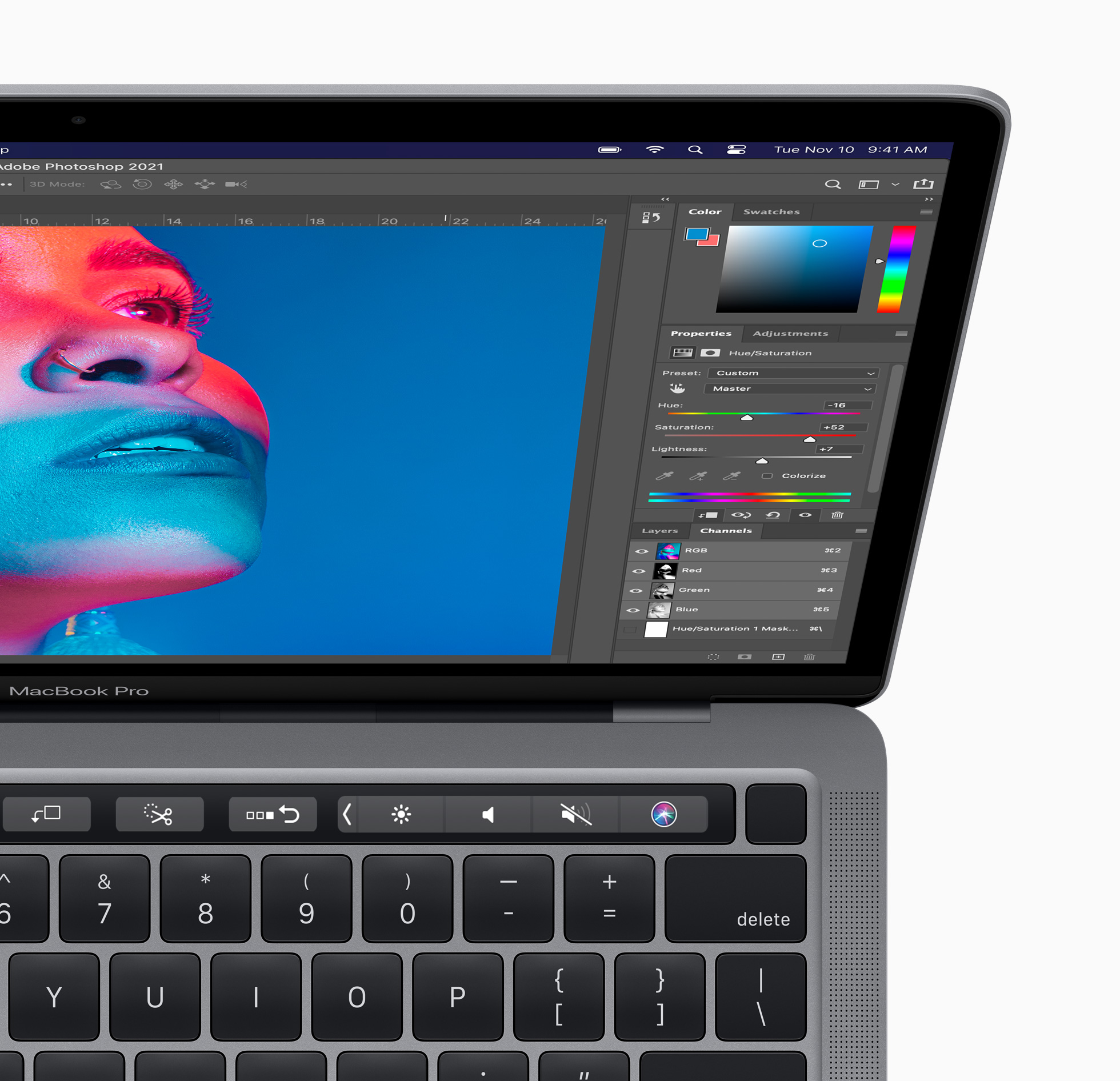
2020 M1 13-inch MacBook Pro. Image: Apple.
We’ll have to wait a while longer for an Apple Silicon replacement for the power user MacBook 16-inch, with discrete graphics, but the 2020 MacBook Pro 13 is an ideal showcase for the M1. According to some online reports, the new Pro 13 should outperform the 16-inch in CPU tasks and face-offs between those two machines will be fascinating.
Compared to the previous gen MacBook Pro 13, the new model has a 2.8x faster CPU, 5x faster GPU and 11x faster machine learning with up to 20 hours battery life.
Compared to the new Air, the bigger Pro has 2 hours better battery life, the OLED Touch Bar, 100 nits brighter screen and ‘studio quality’ mics. Overall, the difference between the Air and Pro might seem diminished due to a shared M1 chip, but the Pro retains its powerful active cooling fan system. With Intel chips, we could still see thermal significant throttling, but with Apple Silicon we expect much more impressive sustained performance.
Wi-Fi 6 is supported and, as with the Air, there’s two Thunderbolt / USB 4 ports and a headphone jack.
The Pro starts at £1299 with 8GB/256GB - same price as the high-end Air while the £1,499 model doubles storage to 512GB. You can, however double unified memory to 16GB (£200) and increase storage up to 2TB (£600).
Interestingly, the old Intel 13-inch models remain for sale at a higher starting price / higher spec than the Apple Silicon models. Due to the appeal of Intel Macs to software developers who like booting into Windows, it seems Apple may keep them around for a while. It’s also notable that these Intel machines offer 4 Thunderbolt ports and can be upgraded to 32GB of RAM. It’s likely a higher spec, 4-port Apple Silicon MacBook 13 is in development along with the 16-inch model.
2020 M1 Mac mini
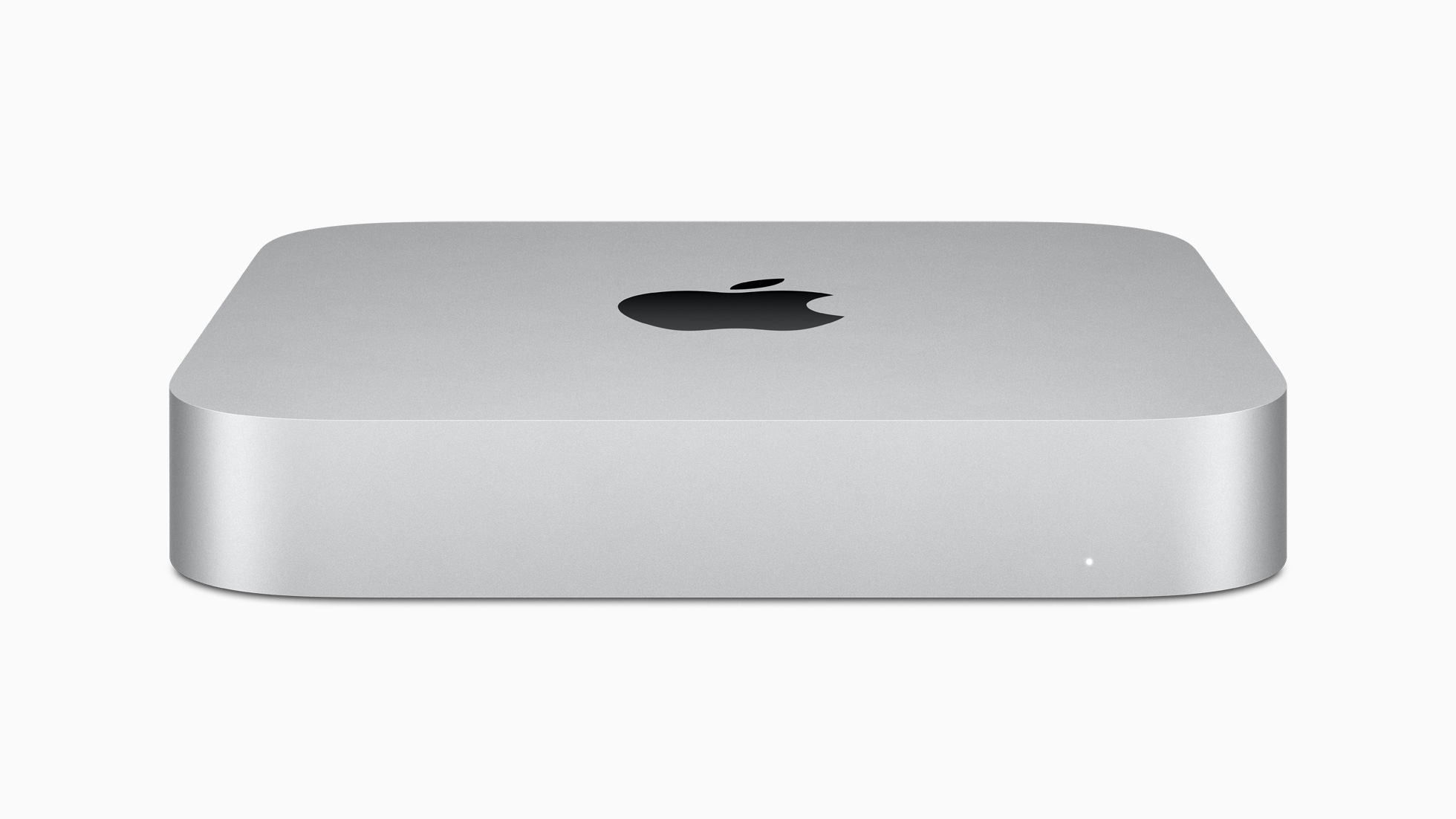
2020 M1 Mac mini. Image: Apple.
Everyone expected a MacBook renewal, but the Mac mini? Not so much. In retrospect, it’s an obvious and smart move, particularly with a price reduction to make entry-level as painless as possible. For developers wanting to get into the Apple software business, this is the machine to get.
The 8-core M1 chip offers a stunning 3x CPU performance uplift compared to the previous base-model quad core Intel version. Wi-Fi 6 is standard with a full set of ports including, yes, a headphone jack plus GigaBit Ethernet, HDMI 2.0, 2x USB-A and 2x Thunderbolt/USB-C 4.0 ports. Those latter ports enable driving two displays, for example Apple’s Pro Display XDR at 6K.
The base model has 256 storage and 8gb of memory. You can upgrade to 16GB and 2TB, but note there’s no 64Gb option as we had with Intel and that could limit developer appeal. M1 is essentially a mobile-optimised part, so we may need to wait for a true desktop class Apple Silicon chip to get wider options here. As with the MacBook Pro range, Intel Mac mini’s remain on sale.
For now, the marketing pitch is that the mac mini is 1/5th the size and five times faster than a PC in its price range. Quite how meaningful this is… let’s see.
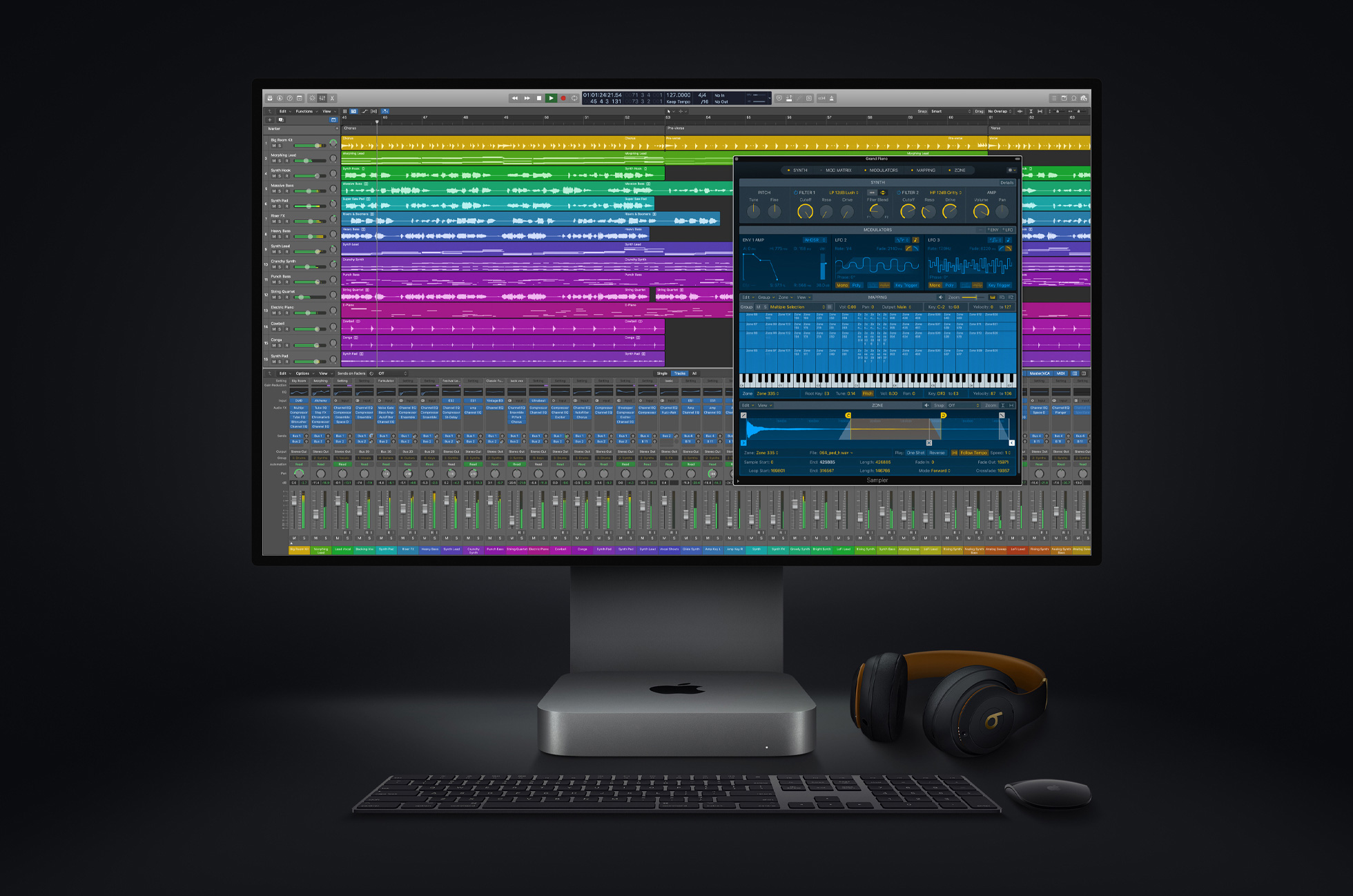
2020 M1 Mac mini running Logic Pro. Image: Apple.
Where next?
On the rumour mill, there’s talk of a new Mac Pro that’s the same shape as the original, but half the size. Possibly the Apple Silicon iMacs might crib the design language of the iPad Pro? Could a revived 12-inch MacBook offer more aggressive pricing?
However, in truth, this event and these products must be remembered as a launch pad for the next generation Mac experience. It’s beyond doubt that Apple’s own apps will fly, what the story is with third-party apps remains to be seen. Rosetta2 is capable of making non-native apps run faster than Intel - in some cases - but what the general rule is we just don’t know. A lot of the pain in transitioning to 64bit Mac apps with Catalina makes compiling for Apple Silicon much easier, a matter of hours or a day in scenarios hyped by Apple, but performance and third-party support needs to be seen.
Adobe’s Lightroom app will go native in December, Photoshop and other apps will follow ‘early next year’. Downloading iOS apps is now supported, but the real world utility of iOS apps on Mac remains to be seen. Some apps such as YouTube and other Google apps have already been withdrawn. Premium apps such as Things and the OmniGroup range would be far more affordable with a single app price, but we don’t know yet. One stat that certainly caught our attention was a M1 MacBook Pro being capable of playing back 8K ProRes video in DaVinci Resolve with zero dropped frames.
Parallels has announced its emulation apps will run under Rosetta2, but don’t yet support virtual machines with M1 - native apps and virtual machine support are in development. Windows own growing support for x64 applications on ARM should help with this.
For the past few years the prowess of Apple’s chip engineers has posted dazzling performance figures without being truly tested on heavyweight PC-type apps. The first generation M1 chips - not yet even desktop class - are claiming dazzling performance figures (with the Apple website helpfully providing reams of explanatory small print which suggest the stats are cleverly framed but broadly in the credibility ballpark). Based on what we’ve seen from the six-core A14 in fan-less, thermally constrained iPhones the promise of big performance leaps is very believable. Let’s hope the reality lives up to the hype, but the practical reality is that the synthesis of Apple operating system and hardware is only just starting. With familiar hardware designs and largely unchanged pricing, the magic has to come from software.
Tags: Technology News

Comments